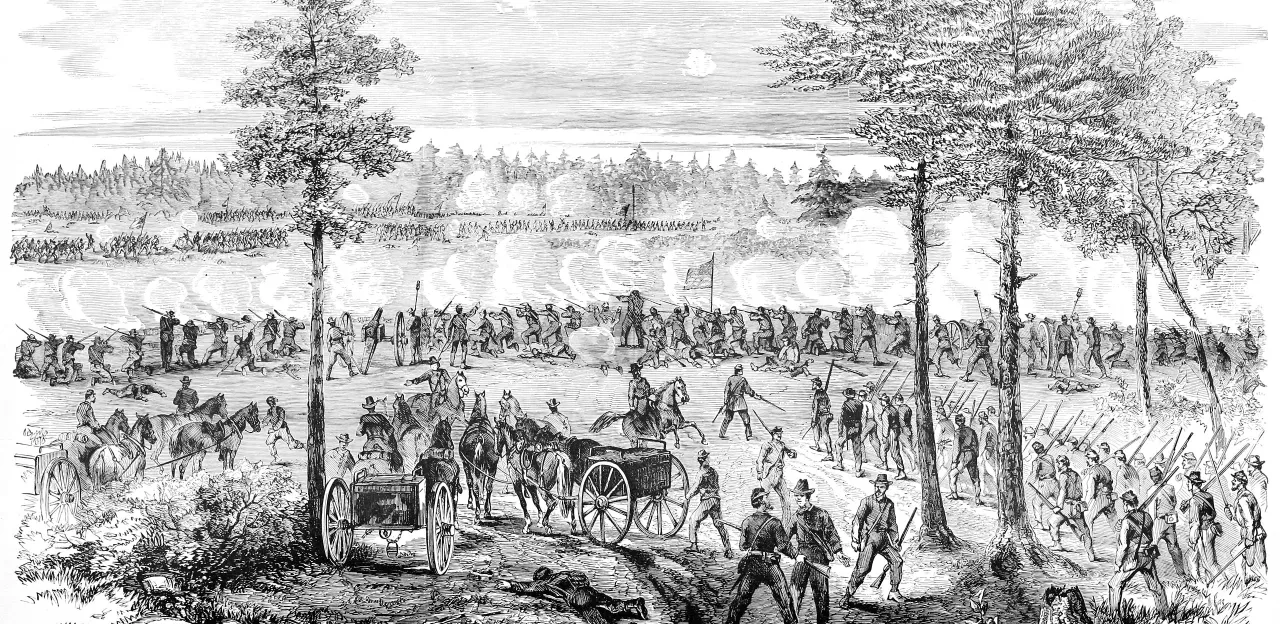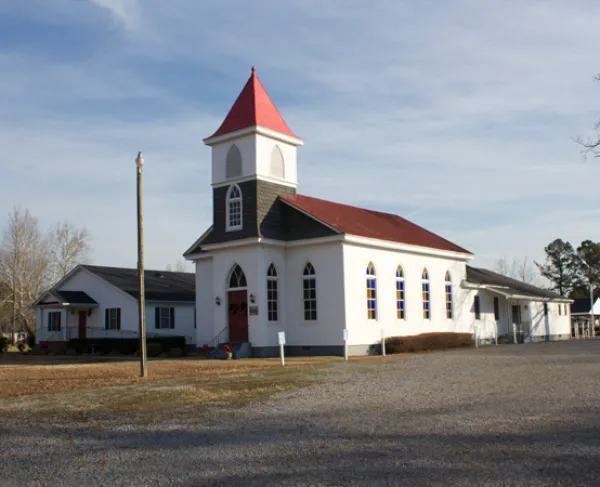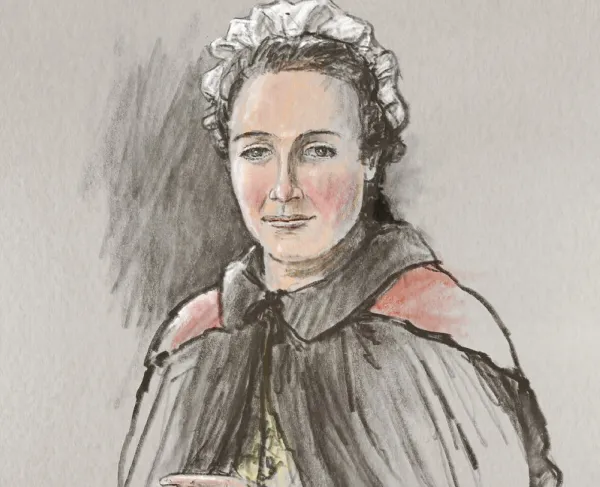Cutting the Supply Lines
Battle of Weldon Railroad
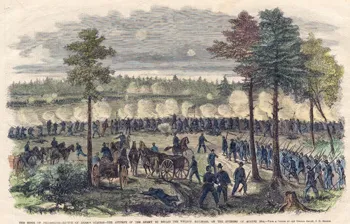
On August 22, 1864, the smell of fresh earth hung in the air as Union soldiers continued to throw damp clay and sand upon the newly cut pine log revetments. Having finally wrestled the Weldon Railroad from the clutches of Robert E. Lee's army, members of Gen. Gouverneur K. Warren's V Corps strengthened their entrenchments that ran parallel to, and across their newly won prize.
After an unsuccessful attempt to gain this supply line on June 21-23 in the Battle of Jerusalem Plank Road, the Federals made a second grab for the line on August 18. Intercepting the railroad in the area of Globe Tavern, six miles south of Petersburg along the Halifax Road, General Warren turned two divisions of his corps toward the Confederate defenses south of the city. His reconnaissance-in-force was actually made up of four divisions under Brigadier Generals Charles Griffin, Samuel Crawford, Romeyn Ayres and Lysander Cutler. Being informed of this enemy movement General P.G.T. Beauregard sent out infantry and cavalry under Generals Henry Heth and James Dearing to oppose this advance. Heth's two brigades commanded by Brigadier Generals Joseph R. Davis and Henry H. Walker collided with Ayres' and Crawford's Divisions about a mile north of the tavern. In the open fields and woods of the Wells and Davis farms, the two armies fought to a standstill, both giving and taking ground.
The 19th saw a continuance of fighting, with the Federals getting the worst of it. Heth's two brigades now returned with the support of Brigadier General Thomas Clingman's brigade. While Heth's men pressed the Federals in their front again, a flank attack by Brigadier Generals Alfred H. Colquitt and David A. Weisiger, under Major General William Mahone, took the Federals by complete surprise. Mahone, knowing the area well, moved his men down Baileys Road (now Johnson Road) from the trenches and fell upon the Federal right flank, rolling it up. Only reinforcements arriving from the IX Corps under Brigadier General Orlando Willcox kept this from becoming a total disaster for Warren's men. Before having his attack brought to a halt, Mahone was able to capture close to 2,500 Northerners along with Union General Joseph Hayes. None the less, as night fell, the Federals still had a hold on the Weldon Railroad. If Beaureguard hoped to recapture the line the next day, he needed to send a larger force against Warren.
The 20th brought a day of heavy rain which eventually saturated the sandy fields bordering the railroad, particularly the swampy lower ground to the west. Warren's troops withdrew from their former position and fell back to Globe Tavern to begin building a defense line in the open fields along the railroad, facing to the west. Just north of the tavern, the trenches made a right angle, eventually to connect with the main line running from the Jerusalem Plank Road.
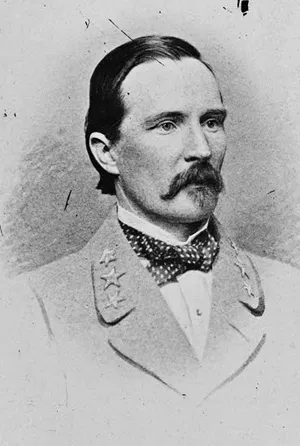
Generals Mahone and Heth were again chosen to lead the Confederate attack against the Federals on the 21st. Forming two assault columns composed of newly formed "provisional divisions," Heth would attack Warren from the north down the Halifax Road, while Mahone formed along the Vaughan Road, running parallel to and west of the Weldon. His men would have to cross open fields and wooded lowlands before reaching the Union position astride the railroad. Heth's attacks were easily repulsed when Warren's artillery (30 guns) opened up on them. Later, when Mahone's attack on the left flank reached the pine woods, his men became bogged down in a swamp as the Northerners concentrated their deadly artillery on that enemy -force. Only general Johnson Hagood's South Carolinians actually breached the Federal line, before being forced back with the rest of the column. Confederate Brigadier General John C.C. Sanders was killed in the attack and Thomas Clingman badly wounded. The last attempt to regain this major supply artery failed in the Battle of Weldon Railroad.
Currently, a portion of the August 21 fight is preserved by Petersburg National Battlefield at the site of Union Fort Wadsworth on the Halifax Road. This Federal bastion, built the following month on the recently captured ground, protected the newly gained prize. In the post-war years, survivors of Hagood's Brigade erected a monument at this location to their role in the battle where they lost 467 men out of 740.
The fields and woods of the first two days action remain pretty much as they did in 1864. Located just south of the Halifax - Vaughan Road intersection at the head of Collier Rail Yard, yearly cultivation and crop growing still takes place here. The rural setting of this hallowed ground will soon be in memory only, as development slowly engulfs the area.
Battle of Reams Station
While this fighting was going on for possession of the railroad, General Lee himself was superintending operations north of the James River. General Winfield S. Hancock's II Corps had crossed at Deep Bottom and threatened the Confederate line south of Richmond. After accomplishing his objective, on the night of 20th, Hancock withdrew his forces to their former position around Petersburg.
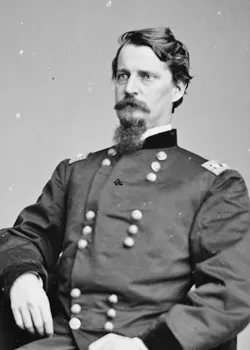
With only a day of rest, Hancock was once again put on the march with instructions to destroy the Weldon south of Warren's position as far as Rowanty Creek. Taking two of his divisions under Generals John Gibbon and Nelson Miles, along with General David McM. Gregg's cavalry, he proceeded to the railroad and began the destruction. By the evening of the 24th, his men had destroyed the track to a point about three miles beyond Reams Station. There would be only another five miles left to complete their objective. That night reports began arriving that a large enemy force estimated at between 8,000 to 10,000 men was rapidly approaching. This would prove to be a column led by Lieutenant General A.P. Hill sent to intercept the Federals and prevent further destruction of the Weldon Railroad.
Not much was left of Reams Station when the Union soldiers arrived there on the 24th. Located twelve miles south of Petersburg, it had first been visited by Federal cavalry raiders under Generals James H. Wilson and August V. Kautz in the latter part of June. They burnt what they could while passing through the area, then were followed by the VI Corps who completed the demolition. Before they left these Federal infantry constructed an elliptical shaped line of breastworks with an opening in the rear in the event they should be needed at some point. It was these that Hancock's men fell back into upon hearing of Hill's threat.
These rapidly and poorly built works placed the Federals in a very precarious position. Only about 700 yards of low parapet actually faced toward the enemy with the returns extending approximately 800 to 1000 yards. This face ran parallel to the Weldon Railroad, 20-30 yards in rear of the line, which ran through a cut then up on an embankment. This meant that if the troops had to retire, they would be exposed to enemy view and fire, with reinforcements or ammunition resupply being at the same disadvantage. The closeness of the two returns also opened the troops holding them to enfilading and rear fire. Adjacent to the railroad was the Halifax Road, along which and in the immediate center of the salient was Oak Grove Methodist Church, later to serve as a hospital.
The sounds of gunfire first rang over the earthworks as Gregg's cavalry were pushed in from the south, falling back from their post at Malone's Crossing. Elements of Major General Wade Hampton's cavalry were responsible for this. At the same time, Hancock's pickets were pressed from the west as the van of Hill's column advanced down the Dinwiddie Stage Road. At 2 p.m. the men of Hancock's two divisions readied themselves for the initial enemy assault.
Arriving on the scene first were three brigades under General Cadmus Wilcox and later by two divisions of horsemen under Hampton. Wilcox's soldiers quickly made two stabs at the face of the salient, coming within yards of it, before being forced back. Shortly, this column would be reinforced by elements of both Generals Henry Heth's and William Mahone's divisions, who would formulate a plan to assault the enemy position. This time their goal would be the northwest angle of the Federal line. About 5:40, after a peppering by Confederate artillery under Colonel William Pegram, the final attack began. This time the Southerners were able to affect a breakthrough at the angle, carrying the lighting into the nearby railroad cut. Simultaneously, Hampton's troopers assailed the lower return from-the south. Miles was pretty much able to hold his line along the northern return, but a good portion of Gibbon's men broke or were captured along the salient face. Hancock tried to rally his fleeing troops and was partially successful in keeping the battle from turning into a complete route. Nightfall and a heavy rainstorm brought an and to the inglorious defeat of Hancock's II Corps, The general was heard to say that day as the fighting culminated, "Colonel, I do not care to die, but I pray to God I may never leave this field." The Federal army's poor performance has been attributed to numerous factors, the two major ones being: the exhausted condition of the men from their recent expedition north of the James and the large number of newly arrived draftees just brought into the corps.
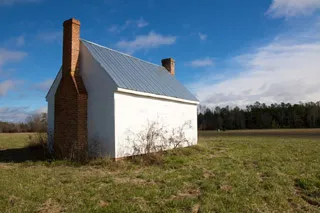
The Federals withdrew to the Petersburg entrenchments along the Jerusalem Plank Road after suffering over 2,500 casualties, mostly prisoners. Hill placed his losses at a little over 700. The railroad destruction was stopped for the time being, and Lee would now be able to use the line only as far north as Stony Creek Depot, sixteen miles south of Petersburg. From that point, supplies would be unloaded and carried by wagon train to Dinwiddie Court House then via the Boydton Plank Road into the besieged city. The victory at Reams Station helped ease the loss of the Weldon Railroad in the minds of Lee's men, but the foothold on it by the Federals made them that much closer to the final Union objective: to take the remaining South Side Railroad.
The peacefulness and tranquility of the Reams Station battlefield today gives little depiction as to the carnage it witnessed 145 years ago. Present day Reams Station is now located about a mile east of the original site. At the turn of the century the Weldon Railroad was realigned and relocated to this new position as the Seaboard Coast Line. The present day Halifax Road, Route 604, now rests on the original railroad bed where it passes through the old railroad cut, scene of deadly combat. Oak Grove United Methodist Church has been rebuilt on the site of the former and is reached via a small existing section of the original Halifax Road. The 19th century structure was moved down the road in later years and converted into a store, the remains of which exist today.
Hidden in the numerous pine forests dotting the landscape around Reams are remnants of the original Federal breastworks. The northwestern "angle" of the salient where the Confederates broke the line still survives, although heavily covered with greenbrier. Most of Nelson Miles' defenses remain as do those thrown up by Gregg's cavalry at the opposite end of the return. Peanuts, corn and soybeans are now grown in the fields across which A.P. Hill's men made their deadly assaults, while many surrounding period farm houses, "silent witnesses" to the battle, remain in various states of repair.
The Weldon Railroad and Reams Station Battlefields have both remained in the pastoral settings they have known for over a century in rural Dinwiddie County. Few modern day travelers through the area ever realize the bloodshed that took place in the woods and fields which make up the landscape. There will probably be a time in the not too distant future when these hallowed grounds will no longer be as they presently are. None the less, the sacrifices of our forefathers, whether North or South, should never be forgotten by future generations. The memory of their heroic deeds and courage are as much a part of our heritage today as it was when the sounds of guns echoed over Petersburg in 1864.
Learn more: The Siege of Petersburg
